In Massachusetts, edible mushrooms like Morel, Chanterelle, Hen of the Woods, and Oyster are found in various state forests, including the Mohawk Trail State Forest and Mount Greylock State Reservation. Mushroom foraging season typically runs from April to November. Joining local mycological societies can provide the necessary information and guidance.
Caution and expert confirmation are required as many toxic mushrooms resemble edible ones. Interested individuals will find our subsequent sections uniquely informative, including identifying mushrooms, understanding mushroom growth patterns, and essential foraging etiquette. Further exploration will undoubtedly enhance your foraging knowledge and capabilities.
Key Takeaways
- Massachusetts State Forests, such as Mohawk Trail State Forest and Mount Greylock State Reservation, offer diverse ecosystems for mushroom foraging.
- Forest floors near oak trees and along trails are promising areas for finding edible mushrooms.
- Morel, Chanterelle, Hen of the Woods, Oyster, and Lions Mane mushrooms are common edible species in Massachusetts.
- Joining local mycological clubs and foraging groups can provide valuable resources and guidance for mushroom hunting.
- Always exercise caution and seek expert confirmation before consuming wild mushrooms to avoid toxic varieties.
Understanding Mushroom Foraging
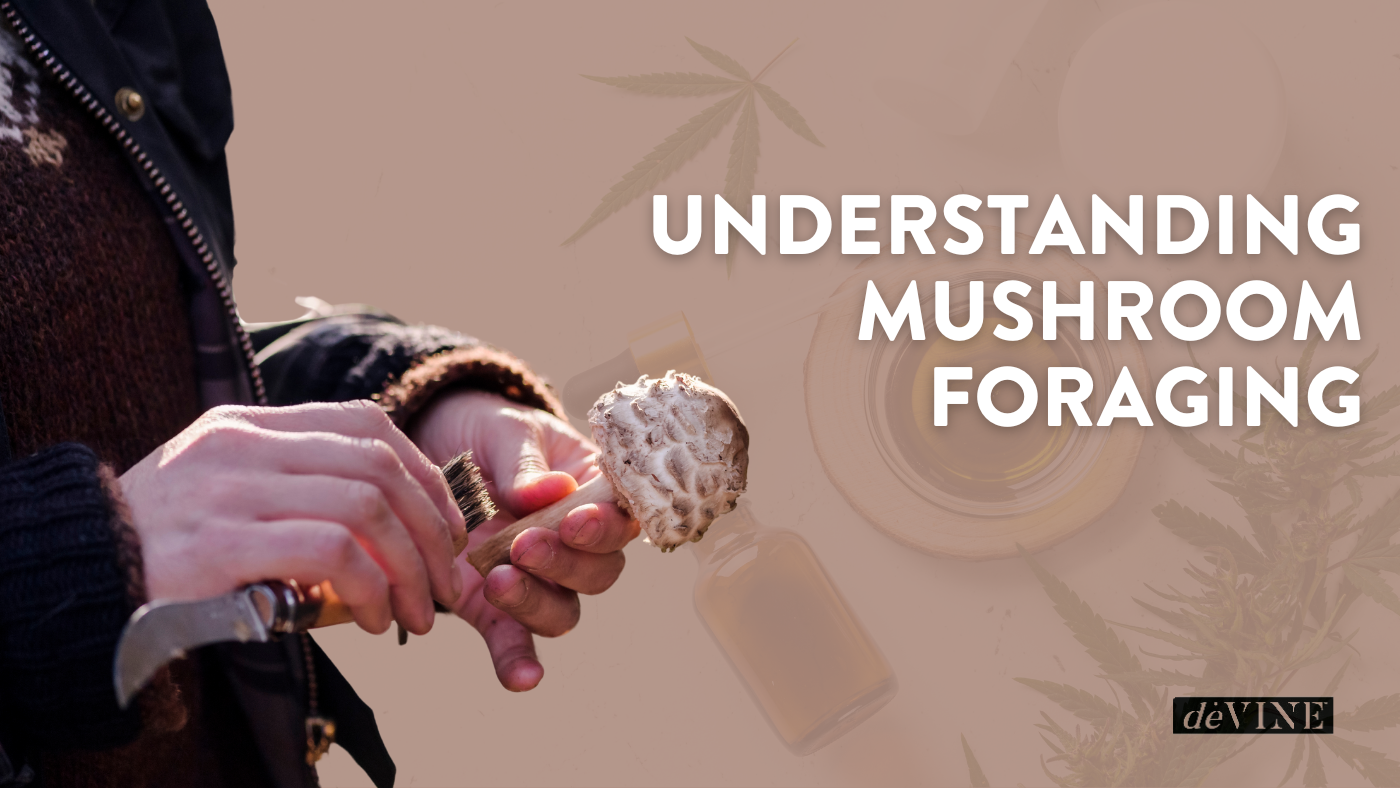
What does it take to forage edible mushrooms in Massachusetts successfully? Knowledge, timing, and the understanding of local habitats are vital elements. Foraging for edible mushrooms in Massachusetts is not just a hobby but a liberating experience connecting us with nature and our food sources. The pursuit of edible mushrooms Massachusetts offers is best undertaken between April and November when these natural delicacies are in their prime.
Weather conditions greatly influence mushroom growth and availability. Hence, understanding the interplay between weather patterns and mushroom life cycleslifecycles can greatly enhance your foraging success. Look for damp, humid conditions that are favorable for mushroom growth. In addition, recognizing specific plants or habitats where mushrooms typically grow can effectively narrow down your search. For example, chanterelles often form mycorrhizal associations with tree roots in forested areas.
Massachusetts is a diverse and rich environment for foragers, home to thousands of mushroom species. This biodiversity can be overwhelming for beginners. However, joining mycological clubs or online communities can provide valuable local resources and information. Such networks will not only assist in identifying edible mushrooms in Massachusetts but also help avoid toxic varieties.
Foraging is an empowering practice that demands respect for nature and its rhythms. It requires patience and persistence, but the reward is a basket full of nature's bounty, waiting to be transformed into delicious, earthy meals. As we explore deeper into understanding mushroom foraging, remember that the goal is not just to fill our baskets but to cultivate a deeper connection with the land we inhabit.
Edible Mushroom Species in Massachusetts
In the diverse ecosystems of Massachusetts, edible mushroom species such as Morel, Chanterelle, Hen of the Woods, Oyster, and Lions Mane can be commonly found. These mushrooms thrive in the varied conditions offered by the state's woodlands, forests, and parks, and the evidence of their growth is a testament to the region's rich biodiversity.
Morel mushrooms, with their distinctive honeycomb appearance, offer a meaty texture and a rich, nutty flavor. They are a sought-after delicacy and can be typically found in woodland areas. Conversely, chanterelles are known for their bright yellow-orange color, fruity aroma, and mildly peppery taste. These mushrooms often grow in mycorrhizal associations with tree roots, especially hardwood species.
The Hen of the Woods, not to be confused with Chicken of the Woods, is a giant, clustered mushroom often found at the base of oak trees. It has a robust, earthy flavor and is a favorite amongst many foragers. Oyster mushrooms, named for their fan-like shape that resembles an oyster shell, have a delicate, mild taste and a velvety texture.
Finally, the Lion's Mane mushroom is a unique species that stands out for its fuzzy, white appearance reminiscent of a lion's mane. This mushroom has a seafood-like flavor, often compared to crab or lobster. It's most commonly found on dead or dying hardwood trees.
Each of these edible species contributes to the local cuisine and foraging culture in Massachusetts, providing foragers with diverse flavors and textures to explore.
The Risk of Poisonous Mushrooms
While the allure of foraging provides a unique culinary adventure, it also presents a significant risk due to the presence of over 100 species of poisonous mushrooms in Massachusetts. These harmful species include the notoriously deadly Destroying Angel and Death Cap, both of which are capable of causing severe illness or even death.
Understanding that poisonous mushrooms can closely resemble their edible counterparts is essential. For example, the Jack-O-Lantern mushrooms can easily be mistaken for the edible chanterelles due to their similar appearance. Yet, their distinguishing characteristics, such as solid and unpleasant odors and bioluminescent properties, can help differentiate them from edible varieties.
The consequences of consuming a poisonous mushroom can range from mild gastrointestinal issues to severe organ damage and, in worst-case scenarios, death. This highlights the importance of exercising caution and seeking expert confirmation before consuming any mushroom picked from the wild, especially for those relatively inexperienced in foraging.
Fortunately, resources are available to help identify toxic mushrooms. For instance, the North American Mycological Association provides guidelines and resources to assist in accurately identifying and avoiding toxic mushroom species while foraging in Massachusetts. This information can prove invaluable in preventing potentially fatal mistakes and ensuring a safe and enjoyable foraging experience.
Foraging Locations: Massachusetts State Forests
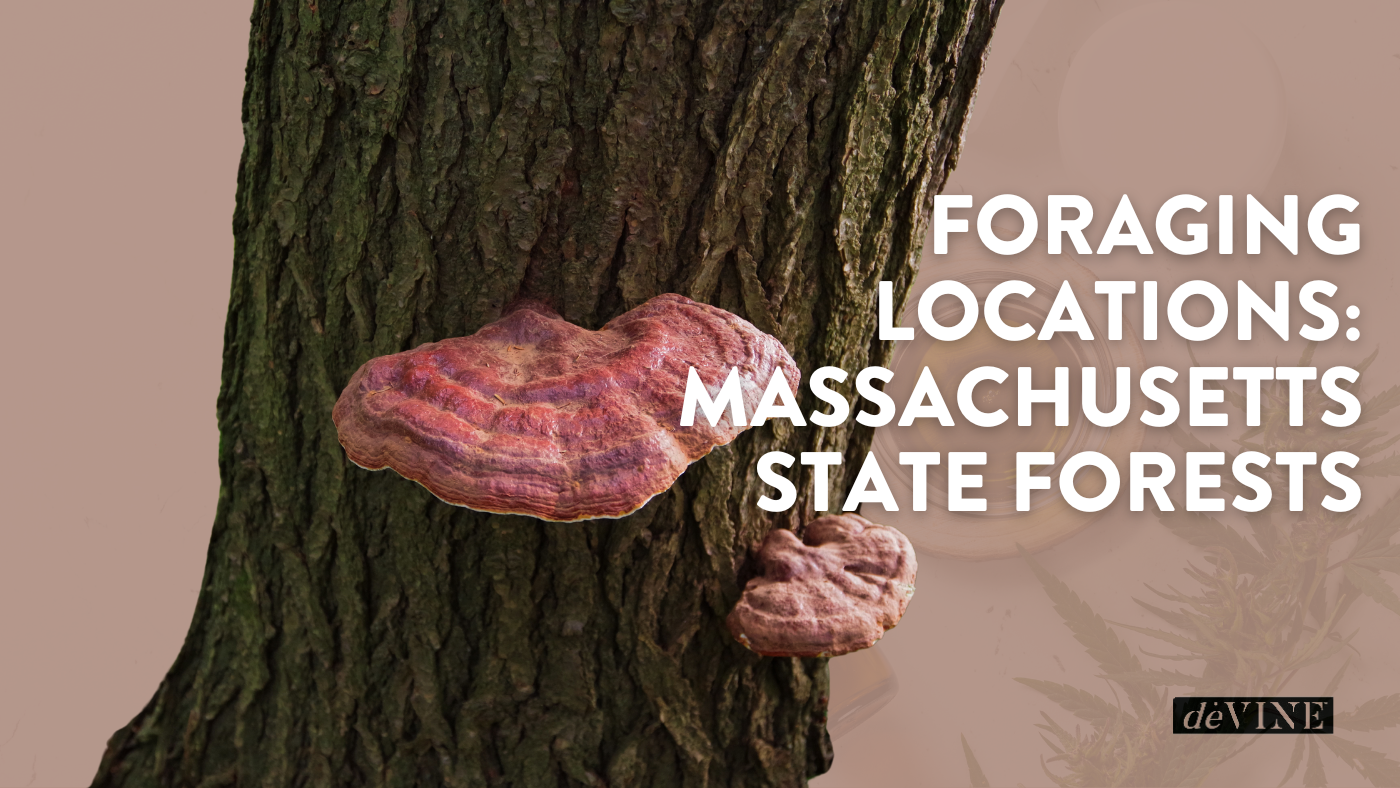
Replete with diverse ecosystems and habitats, Massachusetts State Forests offers many opportunities for mushroom foraging. These forests are home to various edible mushrooms, each with unique characteristics and flavors. Chanterelles and gilled mushrooms such as Lactarius and Russula are just a few examples of what you might uncover.
Mohawk Trail State Forest and Mount Greylock State Reservation are popular spots renowned for their rich mushroom diversity. Here, the forest floor, covered with fallen leaves and decaying wood, provides an ideal environment for fungi. The damp, shaded areas near oak trees and along forest trails are up-and-coming, often yielding a bounty of edible mushrooms.
Nevertheless, remembering to forage in Massachusetts State Forests comes with a responsibility to respect the natural environment and adhere to specific regulations and restrictions. Leave no trace principles should be followed, indicating that one should take only photographs and leave only footprints. It also entails not taking more than one requires and ensuring that one does not harm the habitat.
Amid this liberating experience, it's just as crucial to exercise caution. Be mindful of toxic varieties like the Jack-O-Lantern mushrooms, which are frequently mistaken for chanterelles due to their similar appearance but have a distinct, unpleasant smell and bioluminescent properties.
Embarking on a mushroom foraging adventure in Massachusetts State Forests is not just about the find. It is about immersing oneself in nature, comprehending and respecting biodiversity, and relishing the joy of discovery.
Mushroom Hunting in Local Parks
Local parks in Massachusetts, such as Middlesex Fells Reservation and Blue Hills Reservation, offer abundant opportunities for mushroom hunting, boasting a diverse range of edible fungi. These parks are home to various mushroom species, each with unique characteristics. With a keen eye and knowledge, one can find edible varieties like chanterelles, known for their fruity aroma and meaty texture, alongside Russula and Lactarius, identified by their chalky features and brittle gills.
In these parks, tree species like oaks, beech, and hemlock often have a mycorrhizal relationship with fungi, creating an ideal environment for mushroom growth. These trees serve as signposts for mushroom hunters, pointing to potential harvesting spots. However, one must exercise caution to avoid toxic varieties like the Jack-O-Lantern mushrooms, which can be easily mistaken for the edible chanterelles but have telltale signs like a funky smell and bioluminescent properties.
Local parks are places to find edible fungi and venues to learn about mushroom hunting. Guided mushroom walks are regularly organized by regional associations, providing an opportunity to enhance your knowledge and skills. These walks are beneficial for beginners, offering hands-on experience and expert guidance.
Seasonal Mushroom Varieties
The diversity of mushroom species in Massachusetts changes with the seasons, offering various edible varieties throughout the year. As spring awakens the flora, morel mushrooms emerge, typically from April to June, dotting the landscape with their distinctive honeycomb-like caps. They're a find cherished by foragers for their nutty, meaty flavor.
As the calendar pages turn to summer, particularly late June through early August, chanterelle mushrooms become their own. These sunny-hued fungi, found under live oak trees, are noted for their fruity aroma and substantial texture. Their pleasant taste is a culinary delight to many.
Autumn brings a bountiful harvest of mushrooms with two remarkable types. Hen of the Woods mushrooms, or Maitake, can be foraged from late August to October. These large, frond-like fungi offer a rich, earthy flavor. Concurrently, the cooler months enhance the growth of oyster mushrooms. Although they can be found throughout the year, their prevalence increases in the fall, making this the perfect time to hunt for them.
Lastly, the late summer and fall seasons also welcome the appearance of Lion's Mane mushrooms. Unusual in appearance, with cascading, hair-like spines, these mushrooms are treasured for their seafood-like flavor, often compared to lobster or crab.
Mushroom Hunting Gear Essentials
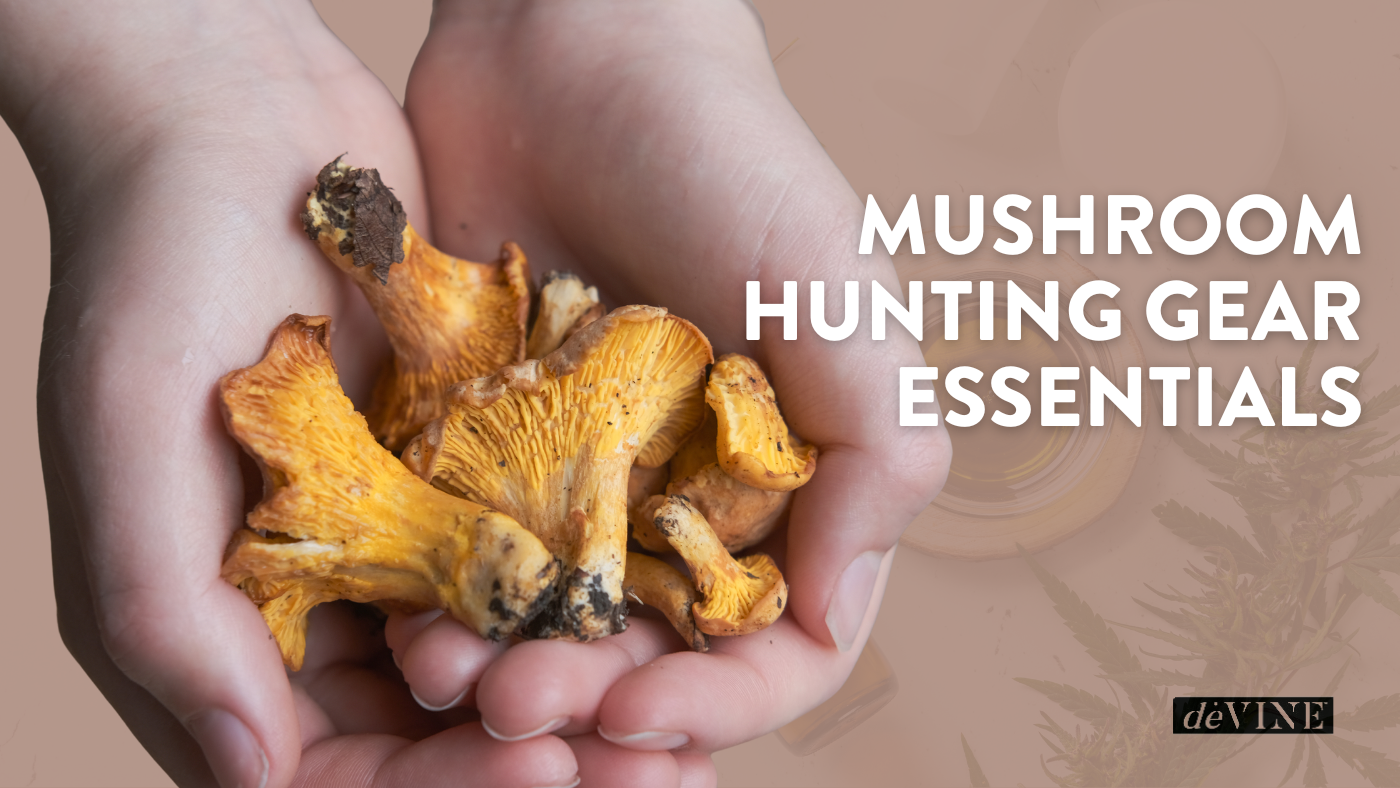
Once familiar with the seasonal variety of edible mushrooms in Massachusetts, it is equally vital to be well-prepared with the right gear for foraging. Essential equipment enhances the efficiency and safety of your foraging adventure, guaranteeing a successful and enjoyable mushroom hunting experience.
Firstly, a good mushroom knife with a brush is indispensable. The knife aids in cleanly cutting the mushrooms from their stems, minimizing damage to the mycelium, while the attached brush is helpful for gently removing debris from your finds. This tool allows foragers to preserve the integrity of the mushrooms and the environment in which they grow.
Next, a reliable field guide is essential. Accurate identification is critical in foraging, ensuring you only consume safe, edible mushrooms and avoid toxic varieties. A well-detailed guide with images and descriptions of different species can be your best ally in the wild.
Moreover, baskets are advantageous for collecting mushrooms. They provide ample space for your collection while promoting air circulation, which helps keep your finds fresh. Unlike bags, baskets prevent delicate mushrooms from being crushed and damaged.
Proper attire, including sturdy shoes and long pants, is also necessary to protect against thorns, bugs, and mud. Weather-appropriate clothing and a hat can shield you from the elements. Remember, a well-equipped forager is a successful one.
Foraging Etiquette and Conservation
As you begin your mushroom hunting journey, following foraging etiquette and conservation principles is essential to maintaining the ecosystem and showing respect for the environment. Ethical foraging embodies responsible interactions with nature while ensuring we can continue to enjoy its bounties for generations.
Before you start foraging, it is paramount to obtain permission if you plan to forage on private property. This respects the rights of landowners and helps maintain good relationships within the community. Remember, the forests are a shared space, and respecting others' rights is integral to foraging etiquette.
Once you have obtained the necessary permissions, it is critical to leave some mushrooms behind. This practice ensures future growth and contributes to the sustainability of the ecosystem. It will ensure that mushroom populations can regenerate and that wildlife that depends on these fungi for food and habitat are not adversely affected.
Additionally, be aware of regulations that protect wildlife habitats and follow them diligently while foraging. These rules are set in place to maintain the balance of the ecosystem and must be honored.
Take the time to educate yourself about endangered or rare mushroom species. Knowing which species to avoid picking can significantly contribute to conservation efforts.
Identifying Edible Mushrooms: A Guide
Exploring the enchanting domain of mushroom foraging in Massachusetts, it is crucial to learn how to accurately identify edible varieties like Morel, Chanterelle, Hen of the Woods, Oyster, and Lion's Mane, each of which possesses distinct flavors, textures, and appearances. These fungi flourish in various habitats, from woodlands and forests to grasslands, offering culinary delights for the discerning forager.
Morels, prized for their honeycomb-like caps and nutty flavor, are identifiable by their unique shape and hollow interior. Chanterelles, distinguished by their fruity aroma and meaty texture, have a vibrant orange-yellow hue and grow in symbiosis with tree roots. Hen of the Woods, named for its resemblance to a hen's feathers, boasts a rich, earthy taste and typically grows at the base of oak trees.
With its broad, fan-shaped caps and delicate flavor, the Oyster mushroom usually grows in clusters on decaying wood. Lastly, the Lion's Mane mushroom, identifiable by its unique, fuzzy appearance, offers a seafood-like taste, often compared to lobster or shrimp.
However, proper identification is paramount as toxic look-alikes lurk amidst the edible varieties. For instance, the poisonous Jack-O-Lantern mushroom can be mistaken for a Chanterelle but emits a pungent odor and glows in the dark. Always tread with caution, and when in doubt, consult expert resources to ensure a safe and rewarding foraging experience. Remember, the liberation from foraging is only truly enjoyed when one respects and understands the nuances of the natural world.
Mushroom Hunting in Western Massachusetts
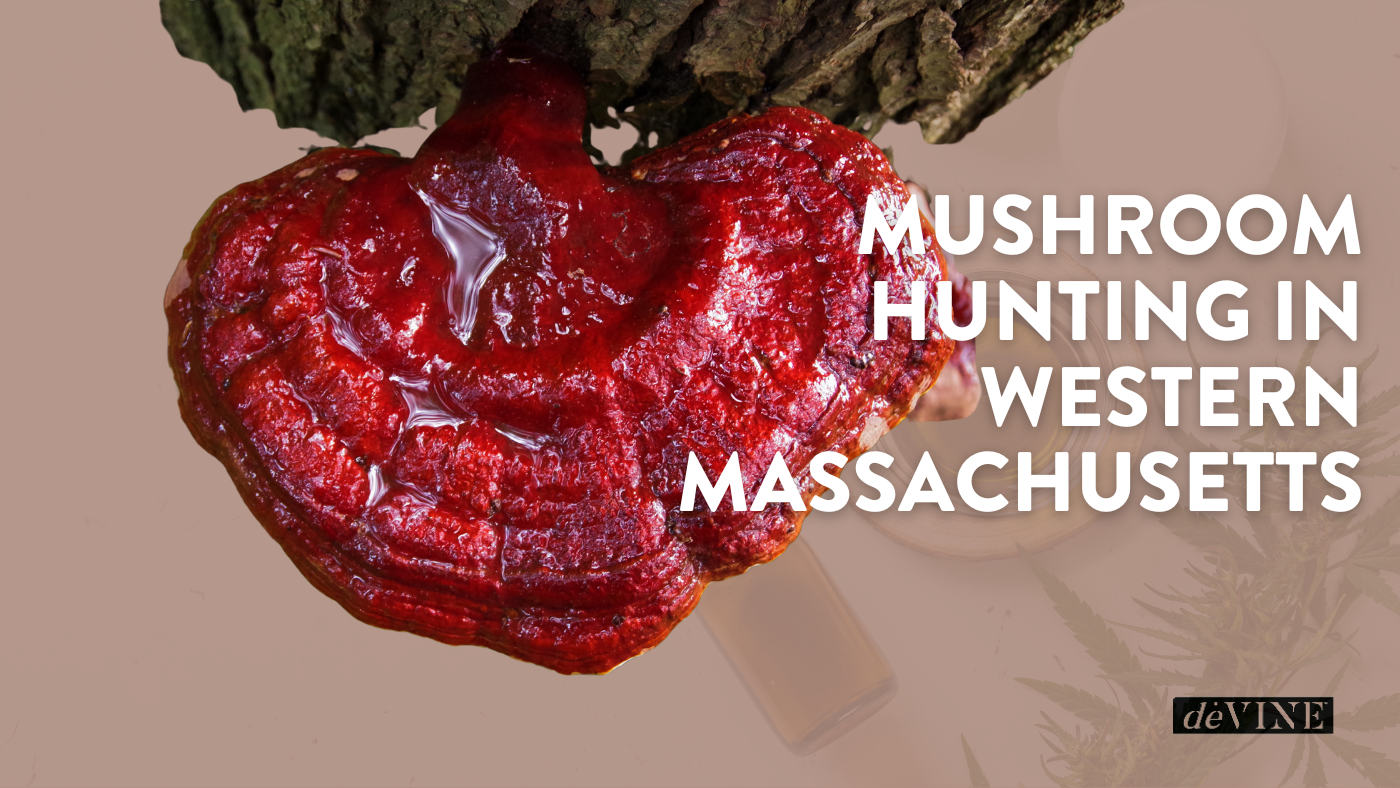
With its diverse ecosystems, Western Massachusetts offers enthusiasts abundant opportunities to hunt for a variety of edible mushrooms, including morels, chanterelles, and oysters. The region's forests, woodlands, and parks are a veritable treasure trove for mushroom hunters, providing a natural habitat for these delectable fungi.
Morels, a prized find among foragers, are often found in areas with moist soil, especially near elm, ash, and apple trees. These mushrooms are easily identifiable with their honeycombed, spongy appearance. Chanterelles, with their distinctive fruity aroma and meaty texture, are frequently discovered in mycorrhizal associations with tree roots. Oyster mushrooms, known for their delicate flavor, grow on dead or dying hardwood trees, such as beech and oak.
The state forests in Western Massachusetts, teeming with unique tree associations, contribute significantly to the variety of edible mushrooms available. These forests provide ample opportunities for mushroom foraging, making them famous hunters destinations.
For beginners, joining local mycological clubs or seeking resources that provide guidance on safe and fruitful hunting areas is recommended. These organizations often organize guided forays and workshops to help enthusiasts identify edible mushrooms and avoid toxic varieties like the Jack-O-Lantern, which can be mistaken for chanterelles.
Mushroom hunting in Western Massachusetts not only offers the opportunity to discover a variety of edible fungi but also provides a liberating exploration of the region's rich biodiversity. Embrace this adventure with an open spirit, armed with knowledge and respect for the environment.
Edible Mushrooms in Coastal Areas
Due to the unique ecosystem conditions, coastal areas in Massachusetts are teeming with a diverse array of edible mushrooms, including varieties such as oysters, maitake, chanterelles, and lobster mushrooms. With their unique blend of salt air, humidity, and sandy soil, these coastal environments create the perfect habitat for these fungi to thrive.
Oyster mushrooms, for instance, are abundant, often growing on dying hardwood trees or fallen logs near coastal forests and wetlands. Known for their oyster-like shape and delicate flavor, these mushrooms add a demonstration to any dish. Similarly, maitake mushrooms, also known as 'hen of the woods,' are savored for their rich, earthy taste and can be found at the base of oak trees.
Chanterelles, another coastal favorite, are notable for their vibrant color and fruity aroma. These mushrooms form mycorrhizal associations with tree roots, making coastal forests prime foraging locations. Lobster mushrooms, on the other hand, offer a robust flavor and are typically found in coastal dunes' sandy soil.
Also, consider unique coastal edibles like sea beans and beach peas. These fungi, often found in salt marshes and estuaries, display the rich diversity of edible mushrooms offered by the coastal areas of Massachusetts.
Foraging in Massachusetts National Parks
The excitement of mushroom foraging in Massachusetts National Parks, like Cape Cod National Seashore and Minute Man National Historical Park, offers a unique chance to explore diverse habitats filled with edible fungi. These incredible parks are home to many woodlands, forests, and trails where you can potentially discover a cornucopia of edible mushrooms. Certain species like Chanterelles, Lactarius, and Russula are commonly found, enhancing the foraging experience with their distinct characteristics.
Each season in these national parks presents different opportunities, allowing foragers to find various mushrooms throughout the year. However, caution that some mushrooms can be toxic. For example, Jack-O-Lantern mushrooms, often confused with chanterelles, can be identified by their unusual smell and bioluminescent properties. Knowledge and caution are crucial when foraging for wild mushrooms.
Before starting your foraging journey, check the park regulations and guidelines. Many parks require permits for foraging activities, and some areas may be restricted to guarantee the preservation of natural habitats.
Guided tours can be an excellent way to learn for beginners or those unfamiliar with local mushroom species. These tours are led by experienced mushroom enthusiasts who can provide safe and educational foraging experiences. They can help you identify edible species, teach you how to forage responsibly, and offer invaluable insights into the fascinating world of fungi.
Urban Mushroom Foraging: Boston
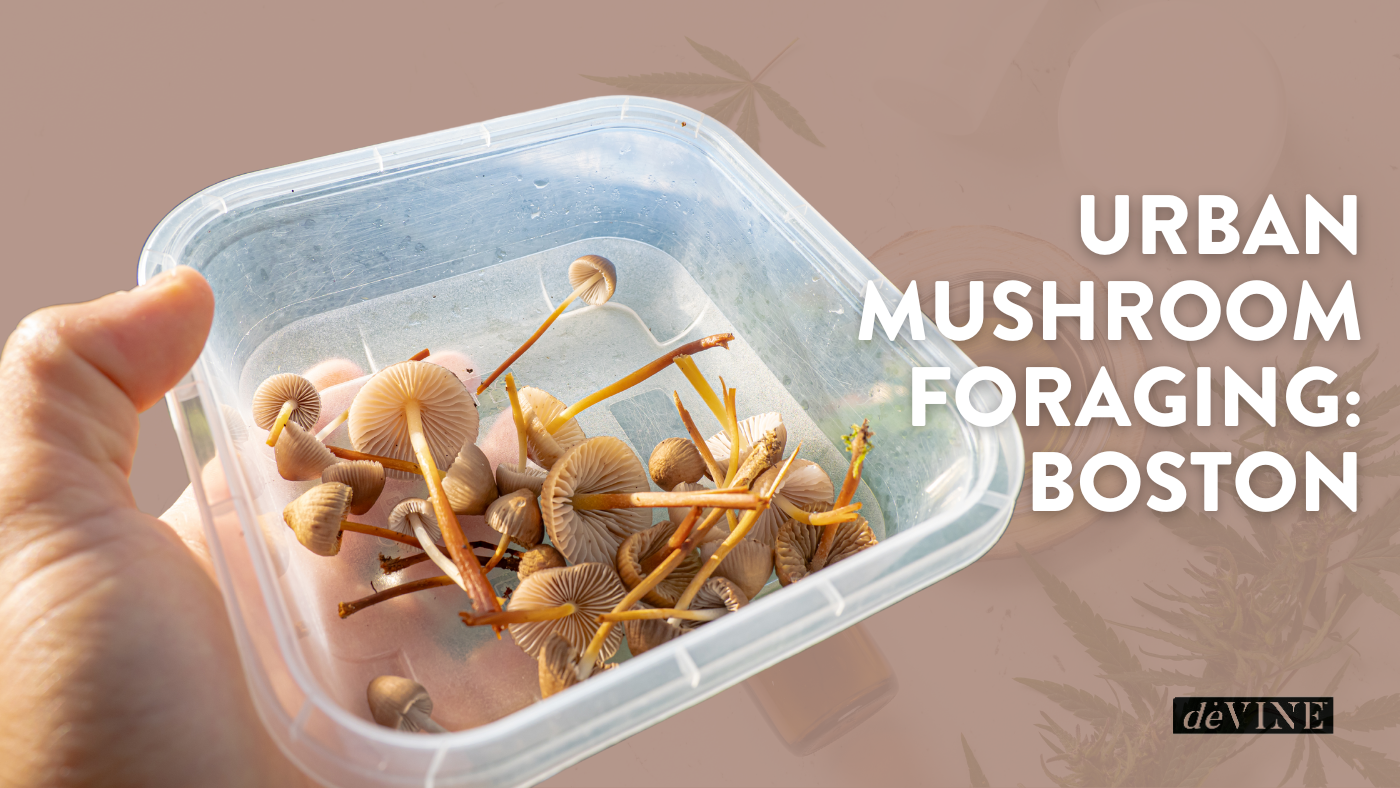
Moving from the expansive national parks to the bustling city streets, Boston presents unique urban foraging opportunities for edible mushrooms in its parks, green spaces, and wooded areas. The city's verdant landscapes provide a fertile breeding ground for a wide array of fungi waiting to be discovered by the keen observer.
Boston's diversity of edible mushrooms includes varieties like oyster mushrooms, maitake, and chicken of the woods, each offering distinct flavors and culinary possibilities. These can grow freely in urban green spaces, delighting budding and seasoned foragers alike. It is an adventure that combines the thrill of discovery with the satisfaction of self-sustenance, an authentic attestation to the liberating power of nature.
Navigating the urban jungle for mushrooms, however, requires meticulous attention. It's crucial to distinguish between edible and toxic varieties to guarantee safety. For instance, the Jack-O-Lantern mushroom, a poisonous variety, can be mistaken for the edible chanterelle but possesses distinctive characteristics like a pungent smell and bioluminescent properties.
Consider joining local foraging groups or clubs to enrich your foraging experience and knowledge. These communities provide valuable insights, helping you identify, locate, and safely harvest many mushrooms thriving in Boston's urban ecosystem.
However, it's imperative to remember that foraging requires respect for nature and property rights. Always have permission before foraging in public or private urban spaces in Boston. This way, the city's mushroom bounty can be enjoyed responsibly, offering a unique, sustainable, and liberating gastronomic journey.
Harvesting and Storing Your Finds
Once you've successfully identified and collected edible mushrooms in Massachusetts, understanding the intricacies of harvesting and storing your finds becomes paramount to preserving their freshness and flavor. Harvesting demands attention to detail and a conscious respect for the environment. Aim to harvest mushrooms in the morning when they are freshest and their identifying features are most apparent.
When cutting your chosen fungi, do so at the base, leaving the roots undisturbed. This practice not only supports the species' sustainability but also guarantees a cleaner product, free from excess dirt and debris. Always remember to carry a mesh bag or basket to allow spores to escape and propagate, furthering the lifecycle of these fascinating organisms.
Post-harvest storage is essential to maintaining the quality of your mushrooms. Store your fresh finds in a paper bag in the refrigerator. This method allows the mushrooms to breathe while staying chilled, preserving their texture and taste. However, resist washing them until ready to use them; excess moisture can induce premature spoilage.
For those with a more substantial harvest, drying and freezing mushrooms offer solutions for long-term storage. To dry mushrooms:
- Slice them thinly and place them in a warm, well-ventilated area until entirely desiccated.
- Store these dried mushrooms in an airtight container.
- To freeze, blanch your mushrooms briefly before transferring them to freezer bags. This process will safeguard their quality and extend their shelf life, offering you a taste of the wild long after your foraging adventure.
Cooking With Wild Mushrooms
After ensuring proper harvesting and storage of your wild mushrooms, the next exciting step is incorporating them into various culinary dishes, revealing their unique flavors and textures. Cooking with wild mushrooms can significantly enhance the flavors of your food with their distinct tastes and textures. Popular choices such as morels, chanterelles, and oyster mushrooms offer many flavors to explore.
Proper cleaning and preparation are vital steps to make sure you are not exposing yourself to potential toxins or unwanted dirt. Once cleaned, mushrooms can be sautéed, roasted, or added to soups and stews to bring out their rich flavors. Their robust taste and unique texture lend themselves well to various cooking methods, so don't hesitate to experiment.
Wild mushrooms are incredibly versatile and can be used in many dishes, from pasta and risotto to sauces and omelets. Chanterelles, for example, with their fruity aroma and meaty texture, offer an intriguing counterpoint to a creamy risotto or pasta dish. Morels' distinctive honeycomb appearance and earthy flavor can add depth to a simple omelet or a complex stew.
Embracing the world of wild mushrooms in your kitchen can open up new culinary avenues and help you discover new flavors. Remember, though, always to be careful when foraging and to correctly identify each mushroom before consumption. As long as you adhere to these rules, the vast world of mushroom cooking is at your disposal.
Private Land Foraging: Seeking Permission
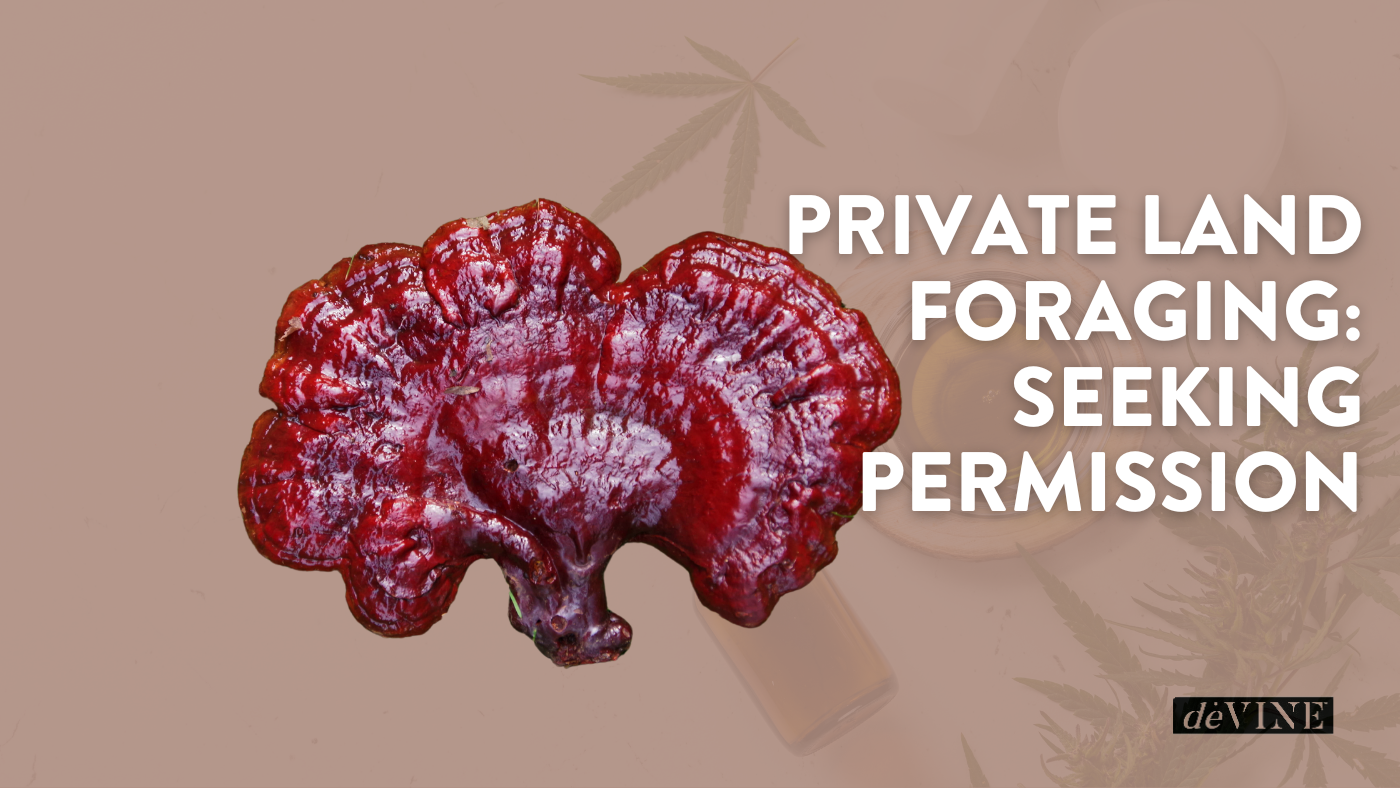
While public forests and trails offer abundant opportunities for mushroom foraging, many enthusiasts also explore private lands in Massachusetts, often with the express permission of the landowners. This practice can open up a wealth of untapped potential for finding edible mushrooms that may not be as heavily foraged as in public places. However, it's important to remember that private land foraging requires respect and adherence to specific guidelines.
Firstly, the landowner must always obtain permission before foraging on private property. If asked politely, landowners may be open to allowing mushroom foraging. Some may even appreciate the ecological benefits of mushroom foraging, as it helps keep invasive fungi species in check. If possible, you should get this permission in writing to avoid any potential misunderstandings or conflicts.
Secondly, landowners may have specific rules or restrictions for foraging their property. These could involve limits on the number of mushrooms you can collect, prohibitions on certain types of fungi, or specific areas where foraging is permitted. Always respect these rules and understand that they are in place to protect the property and its ecosystems.
Lastly, remember to foster a positive relationship with landowners. Courteous behavior and respect for the property can go a long way in securing future foraging opportunities. By showing appreciation for their generosity and sharing your knowledge of fungi and their environmental benefits, you can help promote a culture of shared respect and enthusiasm for the natural world.
The Role of Weather in Mushroom Growth
Undoubtedly, weather conditions such as temperature, humidity, and rainfall play a crucial role in the growth and proliferation of edible mushrooms in Massachusetts. The state's diverse climatic conditions provide an environment conducive to various fungi, including culinary favorites like the distinctive chanterelles and gilled mushrooms such as Lactarius and Russula.
Perfect conditions for mushroom growth encompass cool temperatures ranging from 50-70°F and consistent moisture levels. These parameters encourage the development of mushroom mycelium, the underground network from which mushrooms fruit. Consequently, the rainfall patterns in the spring and fall months create ideal conditions for mushroom fruiting. The moisture absorbed during these periods helps nourish the mycelium, producing an abundant harvest of edible mushrooms.
However, sudden changes in temperature or extended periods of drought can negatively impact the abundance and diversity of these edible fungi. Prolonged dry spells can cause the mycelium to become dormant, reducing the frequency of mushroom fruiting. Similarly, sudden shifts in temperature can stress the fungi, affecting their growth rate and overall health.
To maximize their foraging success, mushroom hunters in Massachusetts can monitor weather forecasts and seasonal patterns, providing clues to prime mushroom hunting times. Recognizing and understanding the intricate relationship between weather patterns and mushroom growth can enhance the foraging experience, leading to more fruitful outings. This knowledge empowers foragers, enabling them to make the most of Massachusetts' natural bounty and find their edible treasure amidst the state's woodlands and trails.
Joining Local Foraging Groups
In the domain of mushroom foraging in Massachusetts, local groups and clubs offer invaluable resources, fostering a sense of community and serving as a rich source of expert knowledge and guidance. These organized cohorts are the gateways to an extensive network of experienced mushroom hunters who are enthusiastic about sharing their wisdom and insights on where to find edible mushrooms and, equally importantly, how to identify and avoid the toxic varieties.
Participation in local foraging groups enhances safety, learning, and the overall enjoyment of mushroom hunting. With the guidance of seasoned foragers, newcomers can quickly learn to differentiate between similarly appearing species, like the edible chanterelles and the toxic Jack-O-Lantern mushrooms, thereby reducing potential risks. Moreover, the shared experiences in these groups can help expand your knowledge about the diverse species of mushrooms available in Massachusetts, their unique habitats, and the various foraging techniques.
In this digital age, online forums and social media platforms have also become integral to the foraging community. These virtual spaces allow for a broader exchange of locations, identification tips, and personal experiences related to mushroom foraging. By joining these groups, one can truly embrace the liberating act of foraging, transforming it from a solitary pursuit into a communal exercise that champions the sharing of knowledge and the joy of discovery.
Joining a local foraging group in Massachusetts is not just about finding edible mushrooms; it's about becoming part of a thriving community bound by a shared passion for the natural world. It is a continuous learning and exploration journey fueled by curiosity and a deep respect for nature.
Mushroom Hunting Workshops and Events
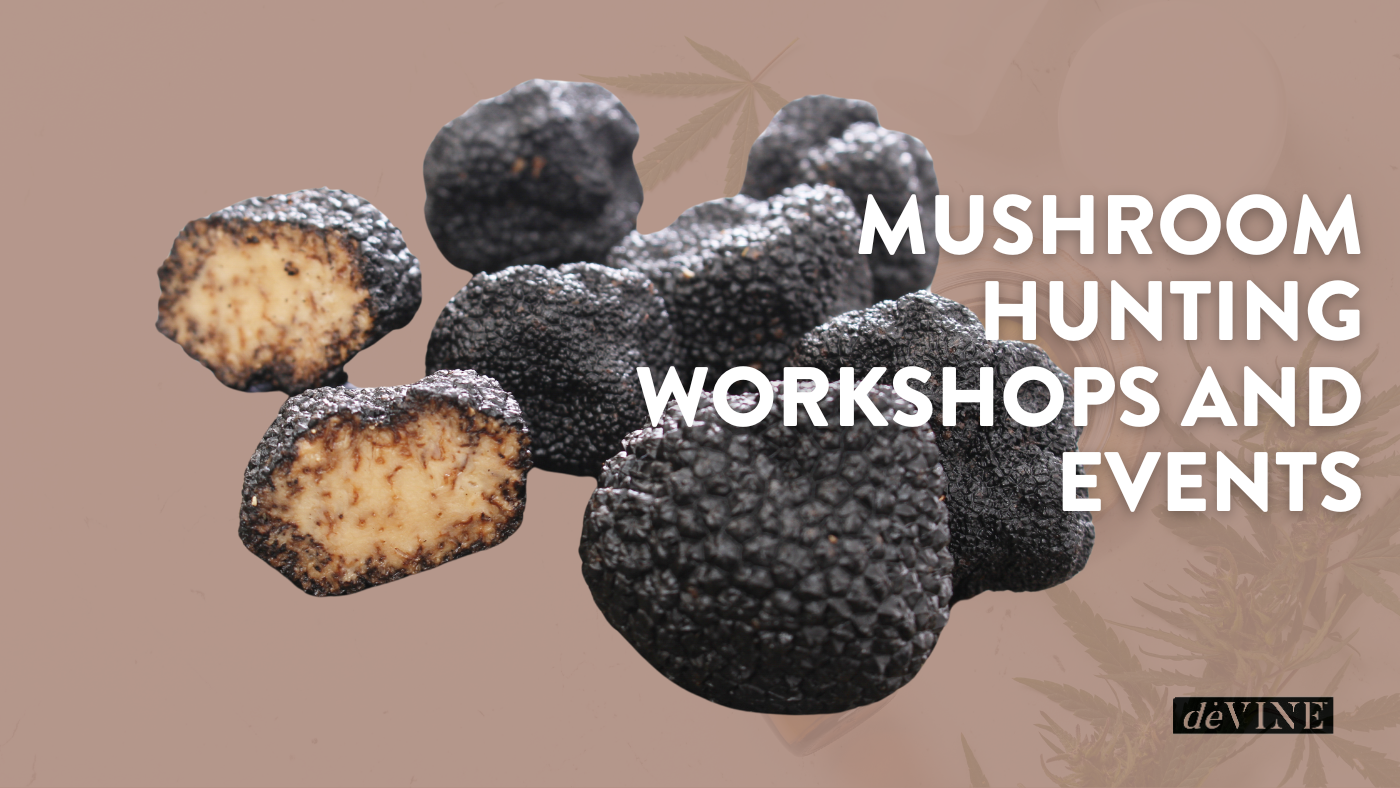
Numerous workshops and events are available throughout Massachusetts for those interested in deepening their knowledge of mushroom foraging. These opportunities cater to individuals keen on discovering freedom through self-sufficiency and connection to nature.
The Massachusetts Mycological Association is a resource for those enthusiastic to learn, offering workshops and forays specifically designed for mushroom hunting enthusiasts. These events allow attendees to immerse themselves in the natural world, encouraging a spirit of exploration and the thrill of discovery.
Mass Audubon is another organization that fosters this interest. It organizes guided mushroom walks and educational events in various locations across Massachusetts. Its programs are designed to inspire respect for nature and promote sustainable foraging practices.
Local farms, such as Fat Moon Mushroom Farm, also contribute to the mushroom foraging community by hosting mushroom cultivation workshops and foraging tours. These hands-on experiences provide valuable insights into the lifecycle of mushrooms and the techniques required for successful cultivation and foraging.
New England Wild Edibles is another establishment offering classes on wild mushroom identification and foraging techniques. They aim to empower individuals with the knowledge and skills to safely and responsibly forage wild mushrooms, promoting a lifestyle of autonomy and appreciation for nature's bounty.
Lastly, check with local botanical gardens, nature centers, and universities for upcoming mushroom-hunting events and classes. These institutions often host educational events that can enhance your understanding and proficiency in mushroom foraging. The pursuit of self-reliance through mushroom foraging is within reach in Massachusetts.
The Benefits of Foraging Your Mushrooms
Exploring the woods and fields of Massachusetts for edible mushrooms offers a unique culinary adventure and a host of other benefits. Mushroom foraging allows you to enjoy fresh, flavorful, distinct ingredients that elevate your cooking. The taste of wild mushrooms, whether the fruity Chanterelles or the earthy Lactarius and Russula, is incomparable to their store-bought counterparts and can provide an unparalleled gastronomic experience.
Foraging your mushrooms also forges a deeper connection to nature. As you wander through the diverse ecosystems of Massachusetts, you not only discover the varied types of edible mushrooms but also learn about the local flora and the intricate symbiotic relationships that exist in the natural world. This immersive experience can promote a greater appreciation for the environment and heighten your awareness of the importance of biodiversity.
In addition to being a recreational activity, mushroom foraging promotes physical well-being. Searching for mushrooms involves considerable walking, bending, and sometimes climbing, which can contribute to your daily physical activity. Furthermore, many wild mushrooms are rich in essential nutrients, providing a healthy addition to your diet.
Lastly, foraging your mushrooms supports a healthier lifestyle by avoiding the pesticides and chemicals often associated with commercially cultivated varieties. This practice enables you to take control of your food source, ensuring that what you consume is fresh, flavorful, and free from harmful substances.
The Importance of Sustainable Foraging
Sustainable foraging, a practice critical to preserving mushroom species, underscores the importance of maintaining ecological balance while enjoying the bounty of Massachusetts' forests. This approach guarantees that mushroom populations are conserved for future generations and sustains the essential ecosystem services provided by these fascinating fungi. Overharvesting can lead to the depletion of edible mushroom species, threatening our ability to continue reveling in nature's gifts.
Responsible foraging practices are vital to safeguarding these resources. These include adhering to guidelines and regulations set for mushroom hunting designed to promote sustainability. For example, using a knife to cut the mushroom at the base, leaving the mycelium in the ground, can aid in the propagation of future crops. It's also prudent to take only what you need and leave the rest for other foragers and wildlife.
Moreover, the power of education must be considered. By sharing knowledge on sustainable foraging practices with others, we contribute to a more significant effort to protect the environment. This helps preserve our forests' ecological integrity and fosters a culture of respect and responsibility towards nature.
In pursuing liberation, it is essential to remember that freedom also entails responsibility. Our actions today will determine the state of our forests tomorrow. By practicing sustainable foraging, we guarantee that we can continue to savor the delights of foraging while preserving the rich biodiversity of Massachusetts' forests for future generations.
Mushroom Identification Apps and Books

In the quest for edible mushrooms in Massachusetts, utilizing mushroom identification apps and books can significantly enhance the accuracy and safety of your foraging endeavors. These tools are designed to aid in guaranteeing and protecting your foraging pursuits, enabling you to forage while minimizing potential risks confidently.
Mushroom identification apps, such as iNaturalist, Seek by iNaturalist, and Picture Mushroom, are powerful allies when venturing into the wild. They provide an interactive and real-time means of verification, offering features such as photo recognition, detailed descriptions, and community-based identification to guarantee the accuracy of your pursuits. While incredibly useful, these apps should be used in conjunction with more thorough identification methods for maximum safety.
Books offer a detailed and thorough understanding of fungi. Timothy J. Baroni's Mushrooms of the Northeastern United States and Eastern Canada and David W. Fischer's Edible Wild Mushrooms of North America: A Field-to-Kitchen Guide are two such resources. They provide a wealth of knowledge on the varying characteristics of mushrooms, including detailed photographs, descriptions, and key features to watch for.
Using both apps and books allows for multiple sources of information, enhancing the precision of your identification process. With practice, you will become adept at distinguishing between edible and toxic varieties, enriching your foraging experience and broadening your culinary horizons. Remember, using these tools is for safety and preserving nature's bounty, ensuring we only pick what we can consume and always leave the forest as we found it.
Mushroom Foraging Laws in Massachusetts
While tools and knowledge are essential to successful mushroom foraging in Massachusetts, it's equally important to understand and respect the local laws and regulations governing this activity. In Massachusetts, mushroom hunting is generally permitted on public lands for personal use without a permit. This means that enthusiasts can freely explore the state's myriad forests, woodlands, and trails in search of edible mushrooms like chanterelles and gilled mushrooms like Lactarius and Russula.
However, if you plan on foraging on private property, you must obtain permission from the landowner. Trespassing laws in Massachusetts are strictly enforced, and the unauthorized removal of mushrooms from private land could lead to penalties. Moreover, if you intend to harvest mushrooms for commercial purposes, you may require a permit or authorization from the relevant authorities. Selling foraged mushrooms without the necessary permissions can result in significant fines.
Different areas of Massachusetts may have specific rules and regulations for mushroom foraging. For instance, some state forests and parks have guidelines, including restrictions on protected areas. Thus, it is essential to familiarize yourself with these directives before commencing your foraging adventure.
Health Benefits of Edible Mushrooms
Edible mushrooms, like Morels and Chanterelles, serve as a treasure trove of essential nutrients, providing significant health benefits ranging from bolstered immunity and improved heart health to cognitive enhancements and support for weight management. Rich in vitamins, minerals, and antioxidants, these mushrooms can be found abundantly in Massachusetts, offering delightful culinary experiences and a boost in overall wellness.
Immunity is one of the primary beneficiaries of a diet rich in edible mushrooms. The antioxidants in these fungi are potent immune system enhancers, helping ward off illnesses and diseases. As for heart health, mushrooms contain compounds that regulate blood pressure and cholesterol levels, reducing cardiovascular disease risk.
On the cognitive front, some specific varieties, like Lions Mane, are known to enhance memory and concentration. These natural brain boosters promote neurons' growth and development, potentially slowing cognitive decline.
Weight management is another area where mushrooms come into play. They are low in calories, high in fiber, and can offer a satisfying and meaty texture, making them an ideal component in a balanced diet. Oyster mushrooms, a common find in Massachusetts, are particularly rich in protein and fiber, aiding in satiety and weight regulation.
Moreover, varieties like Hen of the Woods promote anti-inflammatory benefits and support digestive health. Their high fiber content aids in maintaining a healthy gut, while their anti-inflammatory properties help reduce chronic inflammation.
Where To Buy Edible Mushrooms in Massachusetts
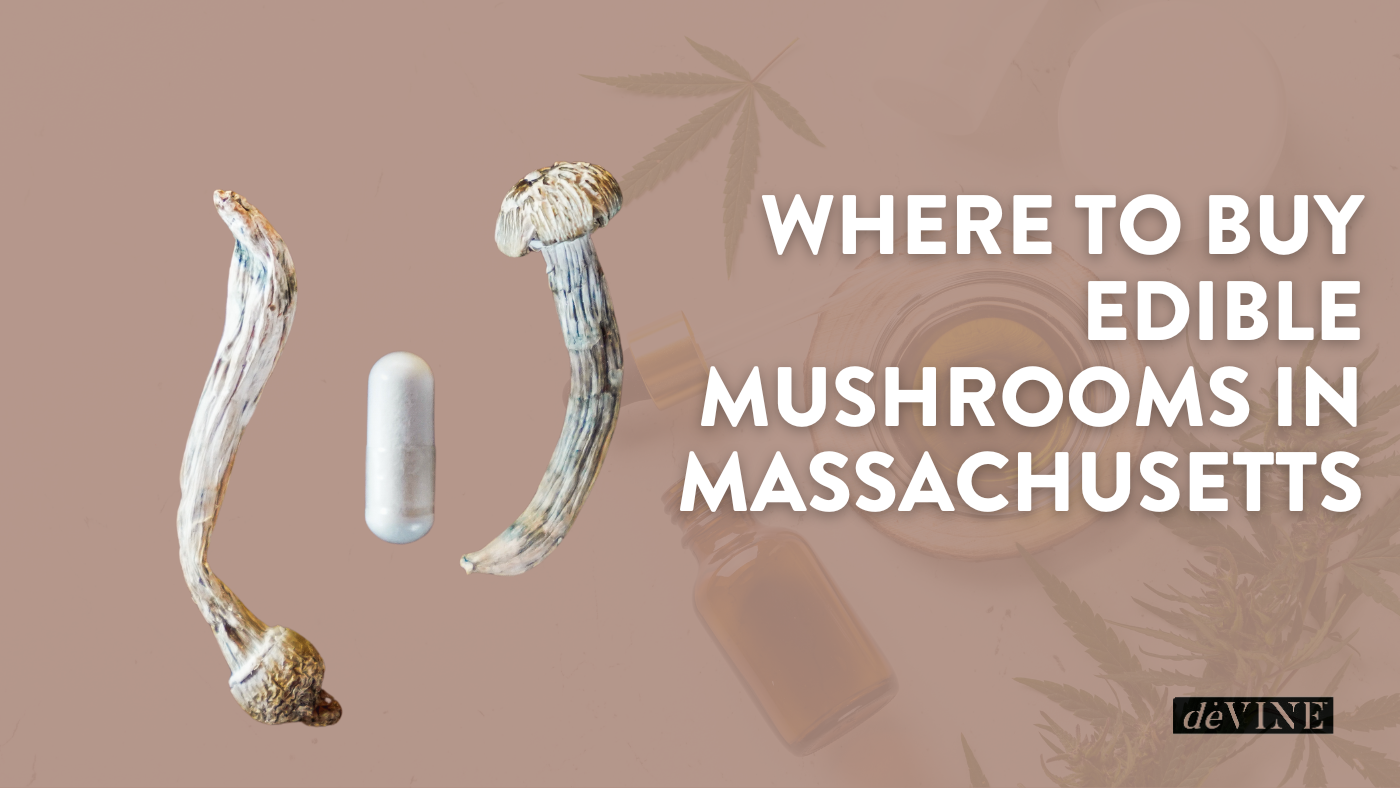
Numerous online and physical stores offer a wide range of mushroom products, edibles, gummies, infused items, and supplements for those seeking to purchase edible mushrooms in Massachusetts. These establishments cater to a diverse audience with a shared interest in exploring fungi's culinary and health benefits.
Among the extensive list of products, one can find Goomz Gummies, Polk A Dot Mushroom Bars, Diamond Shruumz Cones, and Magic Mushroom Gummies, all offering a unique blend of flavors and effects. The edibles range from the exotic Krispy Chocolate Krunch and Maui Coconut Twist by Polk A Dot to the whimsically named Dreamy Grape and Cotton Candy by Meelo Mushroom Gummies.
For those preferring a more concentrated experience, infused products like Psilo Mushroom Extract, Psilo Mape Pen, and Magic Mushroom Syrup are available. These items deliver a potent dosage of mushroom essence and are perfect for those seeking a deeper connection with nature's bounties.
The market also caters to health-conscious individuals with a variety of mushroom supplements. Products like Amanita/D9 Gummies, Ultra Potency Shroom Gummies, ROOMS Mushroom Capsules, and Sporex Liquid Cultures conveniently incorporate mushrooms into a daily wellness routine.
Whether you're a culinary adventurer, a health enthusiast, or intrigued by the world of mushrooms, Massachusetts offers many options to explore and purchase these fascinating fungi. With many online and physical stores, finding the right mushroom product is only a click or a short drive away.
Frequently Asked Questions
Where Is the Best Place to Find Edible Mushrooms?
The best locations to find edible mushrooms typically include forests, woodlands, and trails, where mycorrhizal fungi like chanterelles can be discovered around tree roots. Gilled mushrooms, such as Lactarius and Russula, are also commonly found due to their chalky features. However, caution must be taken to avoid toxic varieties, often misidentified as edible. Always verify proper identification to prevent potential health hazards.
Where Is the Best Place to Find Mushrooms Foraging?
For those seeking the thrill of foraging, Massachusetts' lush forests and diverse trails offer a bounty of mushroom varieties. Under the canopy of oak, beech, and hemlock trees, you might discover the chalky Lactarius or the brittle gilled Russula. Be cautious, however, of the toxic Jack-O-Lantern mushrooms, concealing their danger behind a funky smell and bioluminescent allure. Be prepared, be vigilant, and let the liberating mushroom-hunting adventure begin.
How Do I Know if My Yard Mushrooms Are Edible?
To determine if yard mushrooms are edible, observe their characteristics. Edible varieties generally have a pleasant smell and firm texture, with no slimy caps. Avoid those with white gills, a ring around the stem, or a bulbous base. Common edible yard mushrooms include puffballs, morels, and oyster mushrooms. However, accurate identification is essential; consult local field guides or mycologists when in doubt. Prioritize safety and do not consume uncertain specimens.
What Are the Yellow Cap Mushrooms in Massachusetts?
The yellow cap mushrooms in Massachusetts are likely the Chicken of the Woods variety. These distinctive fungi, characterized by their vibrant orange color and yellow pores, typically grow on decaying or dead oak trees. Harvested from spring to autumn, these mushrooms are a favorite among foragers for their unique taste and texture. However, always exercise caution and adequately identify any mushroom before consumption to avoid potentially toxic species.
Conclusion
The art of mushroom foraging in Massachusetts offers a voyage into an enchanting world of diverse edible species, yet also demands caution due to the lurking danger of toxic varieties. With the proper knowledge, resources, and respect for the laws, this venture can lead to a bounty of health benefits. Ultimately, the forests and woodlands of Massachusetts serve as a living analogy for life - a treasure trove of bountiful opportunities if one possesses the skill and wisdom to discern.
Contact us
We want to express our heartfelt gratitude for taking the time to explore our blog. Your engagement means the world to us! If you're eager to dive deeper into the world of premium cannabis, CBD, and alternative health products, we invite you to visit our homepage at Devine Boston.
For an immersive experience and access to our curated selection of exceptional products, you can also stop by our store at 619 E Broadway, Boston, MA 02127, United States. Our dedicated team is ready to assist you in finding the perfect choices to meet your needs and preferences.
Should you have any questions, require assistance, or simply want to connect with us, please feel free to reach out via our contact page at Devine Boston Contact. We're here to provide you with the highest level of service and expertise. Thank you once again for being a part of the Devine Boston community, and we look forward to serving you soon!

